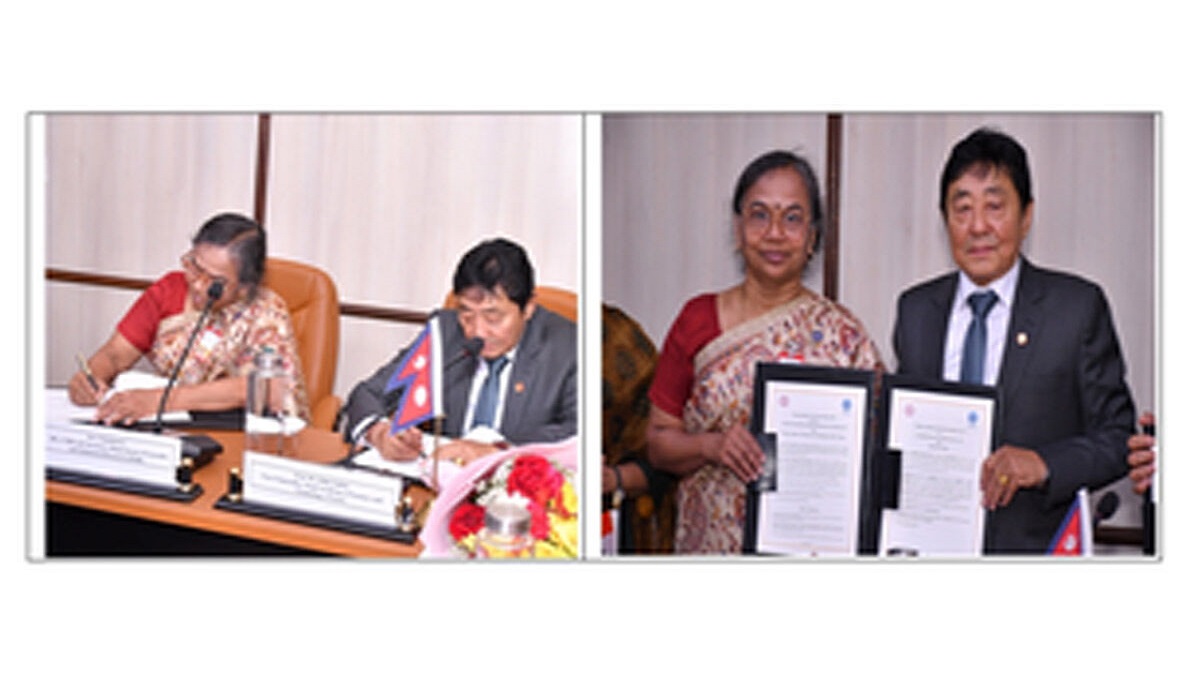India and Nepal have taken a major step toward advancing their scientific collaboration with the signing of a new Memorandum of Understanding (MoU) between the Council of Scientific and Industrial Research (CSIR), India, and the Nepal Academy of Science and Technology (NAST). The agreement, signed on February 18, 2025, at CSIR-National Physical Laboratory in New Delhi, aims to deepen research and technological cooperation between the two nations. This MoU builds on a long-standing partnership and focuses on various domains, including biotechnology, environmental sciences, alternative energy, and material sciences.
How Has Indo-Nepal Scientific Collaboration Evolved Over the Years?
The scientific partnership between India and Nepal has a strong foundation, dating back to 1994 when CSIR and NAST first signed an agreement to promote joint research. Over the years, both countries have organized training programs, workshops, and research initiatives, strengthening their relationship in science and technology. This new agreement serves to revive and expand this collaboration, ensuring that both countries benefit from shared expertise, knowledge exchange, and technological advancements.
What Are the Key Areas of Cooperation Under the New MoU?
The agreement covers a broad range of scientific and technological areas:
Research Collaboration: India and Nepal will work on joint research projects in fields like biological sciences, food science and technology, alternative energy, drug discovery, and environmental technologies.
Exchange Programs: Scientists and researchers from both countries will have opportunities to visit each other’s institutions to share knowledge and resources.
Workshops and Training: Seminars and capacity-building programs will be organized to enhance skills and innovation.
Technology Access: Research facilities and scientific infrastructure will be shared to boost collaboration.
Institutional Partnerships: Universities and research institutions will engage in joint initiatives to promote scientific development.
What Are the Perspectives of the Leaders on This Collaboration?
Dr. N. Kalaiselvi, Director General of CSIR, emphasized that India is committed to enhancing its technology partnership with Nepal and ensuring that scientific collaboration is effectively implemented. She stressed the importance of a well-structured action plan to utilize the full potential of this partnership.
Prof. Dr. Dilip Subba, Vice-Chancellor of NAST, reaffirmed Nepal’s commitment to advancing scientific cooperation. He suggested forming subject-specific working groups to ensure a focused and productive partnership.
India-Nepal Science & Technology Partnership: Key Highlights
| Category | Details |
|---|---|
| Why in News? | India and Nepal signed a new MoU on February 18, 2025, to strengthen scientific and technological collaboration. |
| Institutions Involved | Council of Scientific and Industrial Research (CSIR), India & Nepal Academy of Science and Technology (NAST) |
| Historical Context | First MoU signed in 1994, leading to joint research, training, and workshops. |
| Key Focus Areas | Biotechnology, environmental sciences, alternative energy, drug discovery, food science, material sciences, and technology sharing. |
| Major Initiatives | Joint research, scientist exchange, workshops, facility access, and institutional partnerships. |
| Leadership Views | CSIR’s Dr. N. Kalaiselvi stressed structured implementation, while NAST’s Prof. Dr. Dilip Subba emphasized focused collaboration. |
| Expected Impact | Boosts innovation, economic growth, and bilateral ties through scientific advancements. |



 Operation Hawkeye: US and Jordan Strike ...
Operation Hawkeye: US and Jordan Strike ...
 India and the Netherlands Set Up Joint T...
India and the Netherlands Set Up Joint T...
 Brazil Hands Over BRICS Presidency to In...
Brazil Hands Over BRICS Presidency to In...







